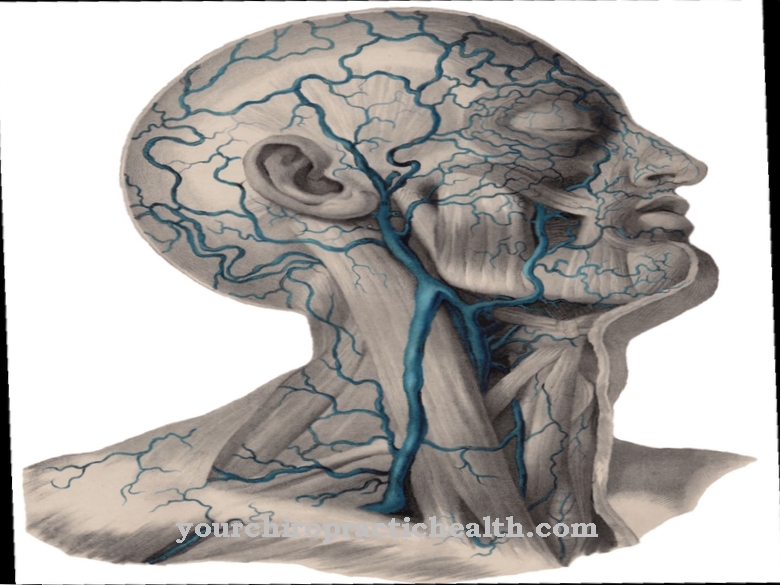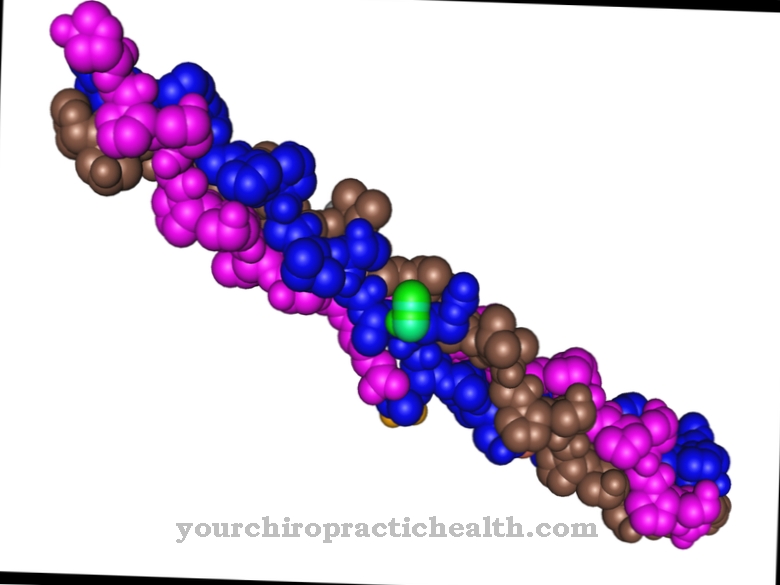As Supraspinatus muscle will the Upper bone muscle designated. It is part of the rotator cuff.
What is the supraspinatus muscle?
The supraspinatus muscle is the upper bone muscle. Together with the infraspinatus muscle (lower bone muscle), the subscapularis muscle (subscapular muscle) and the teres minor muscle (small round muscle), it forms the rotator cuff. This has the function of holding the humerus head in the joint socket.
The supraspinatus muscle is located in the shoulder joint. The skeletal muscle is located below the trapezius muscle and extends from the upper section of the shoulder blade to the top of the humerus. At this point, the muscle is attached to a protruding bone. The supraspinatus muscle is important for bending the upper arm to the side and rotating it outwards. The shoulder muscle and its tendon are often affected by an impingement syndrome or tears.
Anatomy & structure
The origin of the supraspinatus muscle can be found on the dorsal side of the shoulder blade at the supraspinous fossa. This is a shoulder blade depression above the shoulder bone (spina scapulae).
The shoulder bone can be felt on the shoulder blade as a rising bone protrusion through the skin. The shoulder blade side is largely filled by the supraspinatus muscle. Some fibers originate from the supraspinous fascia. The upper bone muscle is covered completely dorsally by the trapezius muscle and partially laterally by the deltoid muscle (deltoid muscle).
The insertion of the supraspinatus muscle lies on the upper facet of the greater tuberosity. What is meant is a larger protrusion of bone on the humerus. It is located approximately to the side in the lower section of the bone head. The upper bone muscle runs through a shoulder constriction between the insertion and the origin. This is caused by the humerus head and the shoulder roof (acromion).
The supraspinatus tendon acts as the insertion tendon of the supraspinatus muscle, and has an anatomically close relationship with the bursae that are located below the roof of the shoulder. The tendon extends to the humerus head (humerus head). At this point, it starts laterally on the greater humerus tubercle. There is also an adhesion between the tendon and the shoulder joint capsule. The subacromial bursa lies between the roof of the shoulder and the terminal tendon. This bursa provides protection against increased bone wear.
The supraspinatus muscle is supplied by the suprascapularis nerve, which forms a branch of the arm plexus (brachial plexus).
Function & tasks
Together with the deltoid muscle, the supraspinatus muscle is responsible for the spreading and external rotation of the upper arm. If the arm is put on and has an abduction angle of less than 15 degrees, it is considered to be the most important actor in the spreading movement of the arm. The main function is then taken over by the deltoid muscle.
Tensioning the shoulder joint capsule is also one of the tasks of the upper bone muscle. The rotator cuff muscle has grown together with the joint capsule and, by tensing it, ensures that capsule folds are not trapped when the arm is lifted. Together with the other rotator cuff muscles, the supraspinatus muscle shifts the humerus head towards the middle at the beginning of the shoulder movement, so that it is centered on the glenoidal scapulae.
You can find your medication here
➔ Medicines for painDiseases
Naturally, in the course of life, the tendon of the supraspinatus muscle is stressed. From the age of 50, there is a risk of spontaneous ruptures in the supraspinatus tendon.
This injury is noticeable through a loss of function of the upper bone muscle and considerable shoulder pain. The external rotation as well as the turning of the arm away from the trunk can only be carried out with difficulty or even not at all.
The supraspinatus rupture is the most common variant of the rotator cuff tear. The reason for the injury is the strong mechanical loads to which the supraspinatus tendon is exposed. Partial tears or complete tendon tears can occur due to constant overloading, accidents or the natural aging process. The complaints usually show up after minor overuse or through physical activities that are unfamiliar. Typical symptoms are shooting pain or discomfort at night with sudden impacts of force or overhead movements.
A tear in the supraspinatus tendon is usually diagnosed by a physical examination by a doctor or by sonography (ultrasound examination). Changes can also be seen on an X-ray. The X-ray examinations only provide information about the impairments at a later stage. If a rotator cuff tear is suspected, magnetic resonance imaging (MRI) is carried out in most cases. Since a torn supraspinatus tendon cannot be healed by conservative measures, an operation must be performed. The surgeon fixes the torn off parts of the tendon on the head of the humerus.
Another common disease of the supraspinatus muscle is the impingement syndrome (bottleneck syndrome). The supraspinatus tendon is trapped under the protruding bone of the shoulder roof. The affected people therefore suffer from pronounced pain. The most common causes of the bottleneck syndrome are injuries or degeneration of the rotator cuff. Patients are then no longer able to lift their arm over their shoulder.
In bottleneck syndrome, doctors differentiated between outlet impingement and non-outlet impingement. Outlet impingement is used when the subacromion is narrowed by the adjacent anatomical structures. This can be bone deposits (osteophytes) or an acromion spur. Non-outlet impingement, on the other hand, is caused by damage to the rotator cuff muscles or an inflammation of the shoulder joint capsule. Inflammation from an injury is a possible cause. The impairments are always associated with severe pain in the supraspinatus muscle or in the supraspinatus tendon.












.jpg)



.jpg)










.jpg)
